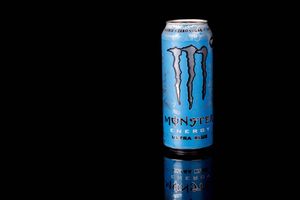Findings describe long-term and real-world data across post-hoc and retrospective analyses
Teva Pharmaceuticals USA, Inc., a U.S. affiliate of Teva Pharmaceutical Industries Ltd. (NYSE and TASE: TEVA), today announced new data from clinical and real-world analyses examining the efficacy of AJOVY® (fremanezumab-vfrm). These data are being presented at the 2021 American Academy of Neurology (AAN) Virtual Annual Meeting, taking place April 17-22.
The data being presented at the meeting span 17 posters and include post-hoc Phase 3 data examining the long-term response of AJOVY in patients who initially did not respond to treatment, an analysis of real-world treatment patterns for patients prescribed AJOVY, and a retrospective evaluation of quarterly and monthly dosing with AJOVY in a real-world setting.
“In addition to our continued work evaluating Phase 3 AJOVY data, we now look forward to studying AJOVY in a real-world setting using patient data and outcomes to help validate our clinical trial findings and advance the AJOVY patient experience,” said Denisa Hurtukova, MD, VP, Head of North America Medical Affairs. “The data presented at AAN provide valuable insights into the long-term use of AJOVY in both clinical and real-world settings, giving the migraine community valuable information and a broader understanding of the potential efficacy of ongoing treatment.”
AJOVY is the first and only long-acting anti-CGRP subcutaneous injection approved in the US for the preventive treatment of migraine in adults that offers both quarterly and monthly dosing options.1+±
Post Hoc Analysis Examines Long-Term Efficacy of AJOVY in Patients Who Initially Responded Inadequately
Patients who completed the Phase 3 HALO Episodic Migraine (EM) and Chronic Migraine (CM) clinical trial, along with new patients, entered the HALO long-term study. Quarterly and monthly doses of fremanezumab were maintained and newly-enrolled and placebo patients were randomized one-to-one to receive quarterly or monthly doses of fremanezumab. Of the 1,890 patients in the long-term study, 210 were characterized as inadequate responders, defined by <25 percent reduction in monthly migraine days at three months. Across four subgroups defined by baseline migraine days, approximately 50 percent of patients achieved a 50 percent reduction in moderate to severe headache days at month 15, despite an initial inadequate response.
This poster, Long-term Efficacy of Fremanezumab in Patients with Chronic or Episodic Migraine Who Were Inadequate Responders to Initial Fremanezumab Treatment, is poster P10.023 in the online program.
Retrospective Analyses Evaluate Efficacy of Quarterly and Monthly AJOVY Doses and Changes in Acute Medication Use
A retrospective, panel-based review of 1,003 patient charts from 421 physicians examined the effectiveness of quarterly and monthly doses of fremanezumab for reducing monthly migraine days and monthly headache days in adult migraine patients over a six-month time period. Of the 1,003 patients, 381 received quarterly dosing and 622 received monthly dosing. Baseline monthly migraine days were 11.9 (quarterly) and 13.2 (monthly) and baseline monthly headache days were 12.9 (quarterly) and 14.8 (monthly) (both P≤0.002). Data from the patients’ charts supported both doses of fremanezumab being effective for providing sustained and clinically meaningful reductions in monthly headache days and monthly migraine days over a six-month time period. Changes from baseline in monthly migraine days did not differ significantly for quarterly versus monthly dosing.
|
Month 1 |
Month 3 |
Month 6 |
|||
|
Quarterly |
Monthly |
Quarterly |
Monthly |
Quarterly |
Monthly |
Mean (percent) reductions |
-3.9 [32.8%] |
-4.9 [37.1%] |
–6.2 [52.1%] |
–7.2 [54.5%] |
–9.5 [79.8%] |
–8.9 [67.4%] |
Monthly headache days |
-3.7 [28.7%] |
-5.1 [34.5%] |
–6.0 [46.5%] |
–7.7 [52.0%] |
–9.7 [75.2%] |
-9.8 [66.2%]) |
In a separate evaluation, the IBM/MarketScan Early View Commercial and Medicare database was used to identify adult patients with at least one pharmacy claim for fremanezumab between October 1, 2018 and March 31, 2019 to evaluate real-world clinical characteristics and treatment patterns for patients with EM or CM that may help inform treatment-related decisions. The evaluation found that of the 1,225 patients identified, 93 percent were using migraine-related prescription acute medications during the pre-index period versus 88 percent during the post-index period. Additionally, 69 percent versus 58 percent were using triptans and 30 percent versus 26 percent were using opioids during these time periods (P<0.05 for pre-index versus post-index). The mean +/- standard deviation of annual claims decreased from 9.8 +/- 9.5 to 8.0 +/- 8.6 for migraine-related prescription acute medications during the pre-index to post-index period. This includes a decrease from 4.3 +/- 5.2 to 3.1 +/- 4.3 for triptans during this time. Evaluating these claims offers real-word evidence of fremanezumab being associated with statistically significant reductions in acute medication claims and good treatment adherence in the first 12 months of use.
These posters, US Real-world Effectiveness of Quarterly and Monthly Fremanezumab for Reducing Migraine Days and Headache Days in Adult Patients with Migraine, and US Real-World Patient Characteristics, Acute Medication Use, and Treatment Patterns for Patients Initiating Fremanezumab, are posters P10.031 and P10.088, respectively, in the online program.
Retrospective Review Evaluates Real-World Adherence, Persistence, Switching, and Reinitiation by Quarterly and Monthly Dosing Regimen in Patients Prescribed AJOVY in US Physician Practices
A retrospective review of real-world data obtained from the Veradigm Health Insights Database examined treatment adherence and persistence for patients prescribed quarterly versus monthly dosing. Patients were included if they were ≥18 years; had ≥1 migraine diagnosis during the study period from January 1, 2014-June 30, 2019; and had a medication record for AJOVY on or after diagnosis during the identification period (September 1, 2018–December 31, 2018). The following outcomes were recorded:
- Patients prescribed quarterly dosing were more likely to be adherent based on proportion of days covered ≥80% (82.8% vs 72.9% monthly; P=0.005) and medication possession ratio ≥80% (84.4% vs 77.8% monthly; P=0.045).
- Patients prescribed quarterly dosing were more likely to be persistent for ≥6 months (82.8% vs 73.9% monthly; P=0.011) and less likely to discontinue AJOVY (15.6% vs 23.4% monthly, P=0.021).
- Of patients discontinuing AJOVY, there was no significant difference between quarterly and monthly dosing in proportions switching to other acute/preventive migraine medications (44.8% vs 44.4%), reinitiating AJOVY (6.9% vs. 10.2%) or permanently discontinuing all migraine medications (48.3% vs 47.6%; all P>0.05).
This real-world study showed treatment adherence and persistence were higher for patients prescribed quarterly versus monthly dosing, with comparable switching and reinitiation rates.
This poster, Real-World Adherence, Persistence, Switching, and Reinitiation by Quarterly and Monthly Dosing Regimen in Patients Prescribed AJOVY in US Physician Practices, is poster P10.123 in the online program.
This year’s annual AAN meeting is fully virtual. Data presentations can be accessed by registering for the meeting.
U.S. Important Safety Information about AJOVY® (fremanezumab-vfrm) injection
Contraindications: AJOVY is contraindicated in patients with serious hypersensitivity to fremanezumab-vfrm or to any of the excipients.
Hypersensitivity Reactions: Hypersensitivity reactions, including rash, pruritus, drug hypersensitivity, and urticaria were reported with AJOVY in clinical trials. Most reactions were mild to moderate, but some led to discontinuation or required corticosteroid treatment. Most reactions were reported from within hours to one month after administration. If a hypersensitivity reaction occurs, consider discontinuing AJOVY and institute appropriate therapy.
Adverse Reactions: The most common adverse reactions (≥5% and greater than placebo) were injection site reactions.
Please click here for full U.S. Prescribing Information for AJOVY® (fremanezumab-vfrm) injection.
About Teva
Teva Pharmaceutical Industries Ltd. (NYSE and TASE: TEVA) has been developing and producing medicines to improve people’s lives for more than a century. We are a global leader in generic and specialty medicines with a portfolio consisting of over 3,500 products in nearly every therapeutic area. Around 200 million people around the world take a Teva medicine every day, and are served by one of the largest and most complex supply chains in the pharmaceutical industry. Along with our established presence in generics, we have significant innovative research and operations supporting our growing portfolio of specialty and biopharmaceutical products. Learn more at www.tevapharm.com.
Cautionary Note Regarding Forward-Looking Statements
This press release contains forward-looking statements within the meaning of the Private Securities Litigation Reform Act of 1995 regarding AJOVY, which are based on management’s current beliefs and expectations and are subject to substantial risks and uncertainties, both known and unknown, that could cause our future results, performance or achievements to differ significantly from that expressed or implied by such forward-looking statements. Important factors that could cause or contribute to such differences include risks relating to:
- the commercial success of AJOVY;
- our ability to successfully compete in the marketplace, including: that we are substantially dependent on our generic products; consolidation of our customer base and commercial alliances among our customers; delays in launches of new generic products; the increase in the number of competitors targeting generic opportunities and seeking U.S. market exclusivity for generic versions of significant products; our ability to develop and commercialize biopharmaceutical products; competition for our specialty products, including AUSTEDO®, AJOVY and COPAXONE®; our ability to achieve expected results from investments in our product pipeline; our ability to develop and commercialize additional pharmaceutical products; and the effectiveness of our patents and other measures to protect our intellectual property rights;
- our substantial indebtedness, which may limit our ability to incur additional indebtedness, engage in additional transactions or make new investments, may result in a further downgrade of our credit ratings; and our inability to raise debt or borrow funds in amounts or on terms that are favorable to us;
- our business and operations in general, including: uncertainty regarding the magnitude, duration, and geographic reach of the COVID-19 pandemic and its impact on our business, financial condition, operations, cash flows, and liquidity and on the economy in general; our ability to successfully execute and maintain the activities and efforts related to the measures we have taken or may take in response to the COVID-19 pandemic and associated costs therewith; effectiveness of our optimization efforts; our ability to attract, hire and retain highly skilled personnel; manufacturing or quality control problems; interruptions in our supply chain; disruptions of information technology systems; breaches of our data security; variations in intellectual property laws; challenges associated with conducting business globally, including political or economic instability, major hostilities or terrorism; costs and delays resulting from the extensive pharmaceutical regulation to which we are subject or delays in governmental processing time due to travel and work restrictions caused by the COVID-19 pandemic; the effects of reforms in healthcare regulation and reductions in pharmaceutical pricing, reimbursement and coverage; significant sales to a limited number of customers; our ability to successfully bid for suitable acquisition targets or licensing opportunities, or to consummate and integrate acquisitions; and our prospects and opportunities for growth if we sell assets;
- compliance, regulatory and litigation matters, including: failure to comply with complex legal and regulatory environments; increased legal and regulatory action in connection with public concern over the abuse of opioid medications and our ability to reach a final resolution of the remaining opioid-related litigation; scrutiny from competition and pricing authorities around the world, including our ability to successfully defend against the U.S. Department of Justice criminal charges of Sherman Act violations; potential liability for patent infringement; product liability claims; failure to comply with complex Medicare and Medicaid reporting and payment obligations; compliance with anti-corruption sanctions and trade control laws; and environmental risks;
- other financial and economic risks, including: our exposure to currency fluctuations and restrictions as well as credit risks; potential impairments of our intangible assets; potential significant increases in tax liabilities; and the effect on our overall effective tax rate of the termination or expiration of governmental programs or tax benefits, or of a change in our business;
and other factors discussed in this press release and in our Annual Report on Form 10-K for the year ended December 31, 2020, including in the sections captioned "Risk Factors” and “Forward Looking Statements.” Forward-looking statements speak only as of the date on which they are made, and we assume no obligation to update or revise any forward-looking statements or other information contained herein, whether as a result of new information, future events or otherwise. You are cautioned not to put undue reliance on these forward-looking statements.
References
-
AJOVY® (fremanezumab-vfrm) injection, for subcutaneous use [prescribing information]. Teva Pharmaceuticals USA, Inc.: North Wales, PA; 2020.
+ “Long-acting” defined as efficacy measured over a 12-week period following a 675 mg (225 mg x 3) SC dose.2
± 225 mg monthly administered as one subcutaneous injection, or 675 mg every three months (quarterly), which is administered as three subcutaneous injections.
View source version on businesswire.com: https://www.businesswire.com/news/home/20210419005003/en/
Contacts
IR Contacts
United States
Kevin C. Mannix (215) 591-8912
Israel
Yael Ashman 972 (3) 914-8262
PR Contacts
United States
Doris Li (973) 265-3752
Israel
Yonatan Beker 972 (54) 888 5898






